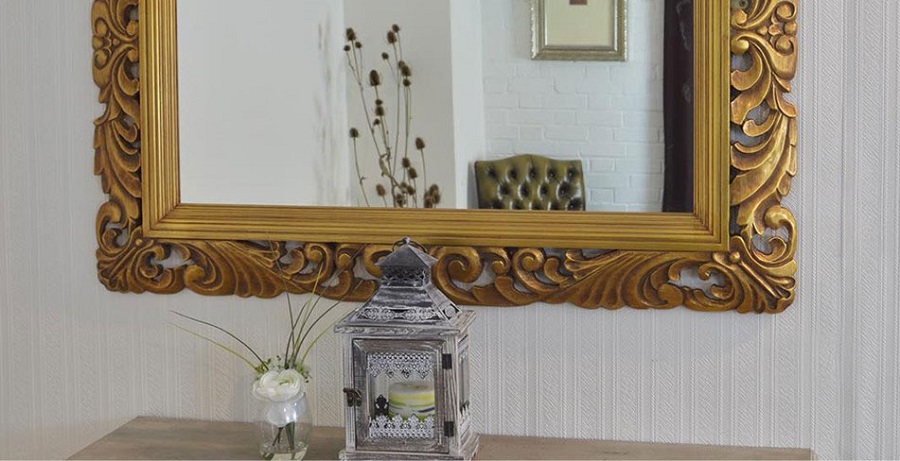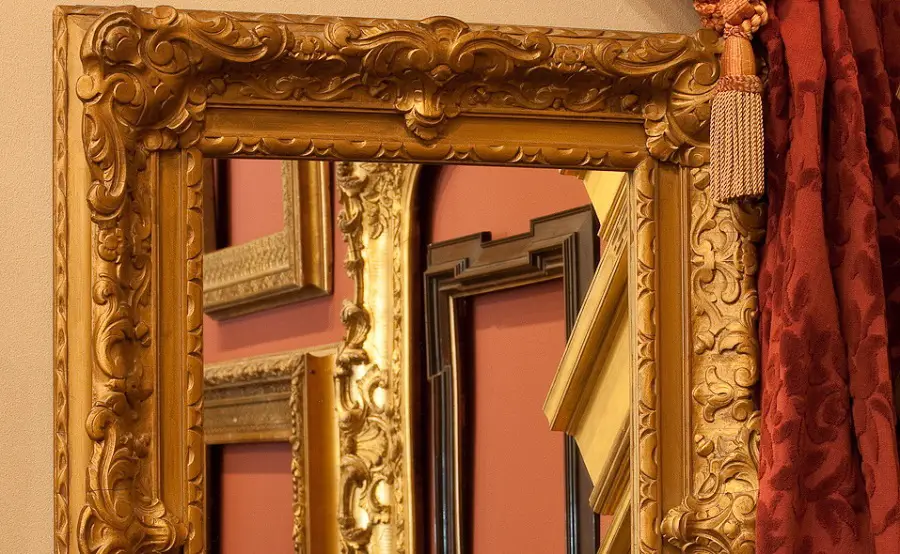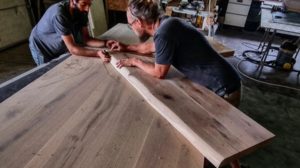The mirror is a highly appreciated decoration element because, in addition to its practical role of reflecting images, it adds space and brightness to rooms. It is welcome in living rooms and bedrooms as well as in bathrooms, hallways and kitchens. Mirrors have been used for a long time, even having their heyday, and have always been used with a frame. Using it without a frame is a modern find, a convenient way to use it only for its practical purpose, not its aesthetic one. Fortunately, the use of framed mirrors has come back into trend, with the frame now chosen to be as close as possible to the style of the furniture or to personalise the space.

The influence of framed mirrors on the whole decor
The frame has the ability to determine the aesthetics of the mirror and even the entire space. Wooden or metal, dark or light coloured, plain or decorated, the frame will influence the way the room we find it in is viewed. Just think of the toilet in a fancy restaurant. A mirror wedged four corners into the wall won't tell you anything, and if you're not the detail-oriented type, you won't even notice it. You use it to see if everything is okay, but if you are asked about the mirror you won't know what to say. It's a different story if the mirror is framed by a well-chosen frame, in tune with the space and elegant. It will be noticed and make you look at the whole restaurant with new eyes.
Frames are not just a way of marking the boundaries of a painting or mirror. In the case of works of art, the frame has a huge influence on how the work is presented. Many painters have even left instructions on how to frame the painting. You can find out about the art of framing paintings here additional information. Framing is equally important for mirrors. A mirror with a well-chosen frame will pleasantly personalise the space and enrich it aesthetically.
The mirror and its evolution
The earliest evidence of mirrors comes from antiquity. In Egypt, Rome, Greece and the Orient there were such objects for reflecting images that had more of a border than a frame. Over time these so-called frames were decorated in various ways, using metals, precious stones, pearls or ivory or with medallions painted with the faces of angels or important figures of the time. An important moment in the history of mirrors is 1516, when brothers Andrea and Domenico from the Venetian island of Murano succeeded in making the perfect mixture to reflect the image very well, thus discovering mirror crystal. The Venetians have long dominated the mirror market, with the great royal and imperial courts commissioning the famous mirrors to adorn their palaces.
The important moment for mirror frames is the Renaissance. This is the moment when the frame becomes a well-defined decorative object, and the making of a frame becomes synonymous with the making of an art object. Frames framing mirrors become very sophisticated objects, decorated with leaves, mouldings or garlands. The design becomes impressive, with carvings, columns or caryatids, precious wood is used such as mahogany. Artists, trends and schools emerge, and the rich countries of Europe come with their own styles. Industrial developments enabled a glassmaker from Orleans to make the so-called cast mirrorwhich will result in very large mirrors (wall mirrors). Royal houses compete to have such mirrors to decorate their palaces. The frames that frame them are built according to the styles of the time - baroque, rococoneoclassical. With the French Revolution, luxury and opulence lost ground and mirrors became more sober. Elements of styles such as neo-Gothic, birdermeyer or imperial are beginning to be found in the frames of mirrors. In England, furniture manufacturers such as Chippendale also make their mark on mirror frames.
The design of mirror frames in the modern era is determined by industrial development. Even though at the beginning of the 20th century mirrors were framed by flowers, birds and the curved lines of the Art Nouveau stylemirror frames begin to focus more on utility, and their development is also marked by the standardisation brought about by mass production. Over time, industrial standardisation no longer satisfied many who continued to see the framed mirror as a special object of decoration, so workshops making special frames to order re-emerged.

What is important when choosing a mirror frame
No matter how classic or modern a mirror frame is, there are a few elements to consider when choosing it. Here are the most important ones:
The material from which it is made. Don't choose cheap materials without personality. That's why wood is a very good choice to frame the mirror. A wooden frame can add elegance to the space. With the right choice of material, the mirror can be integrated into existing decor elements or be a special eye-catcher.
Colour chosen. The frames can be dark or light in colour, while retaining a discreet touch, or they can be intensely coloured and eye-catching. A dark frame highlights the mirror, bringing out its brilliance. The light-coloured frame will form a whole with the mirror, making it a discreet presence in the existing decor. The brightly coloured frame is suitable for a modern decor, but should be used so that it is the only splash of colour, otherwise the decor becomes too busy.
Style. As we have seen, there is a huge variety of styles so we can choose the one that suits our home or personality. The mirror can become an eye-catching, special object if we choose a frame with a contrasting style to that of the house.
When choosing the frame it is important size and weight of the mirror. A very heavy mirror needs a frame that doesn't weigh it down too much, a frame that matches it but is supple and fluid, made of a light material. Position is also important because, depending on how it is placed, the mirror will reflect a part or an object in the house. It should not be placed so that it reflects storage spaces, hidden corners or spaces that need privacy.
To be a relevant piece of decoration, the mirror needs a suitable frame and positioning that will brighten and enhance the space.



























Add comment